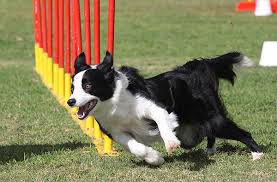boerboel backpack

Adopting A Nowzad Rescue As the only official dog and cat shelter in Afghanistan we are now seeing western contractors, soldiers and Afghan national alike rescuing stray and injured cat and dogs from the harsh streets of Kabul. Whilst our main priority is to attempt to re-home cats and dogs from our shelter in Kabul with caring homes in Afghanistan, we also have many dogs and cats that; after being looked after by a westerner working or serving in Afghanistan; we feel that a forever home in the west would be the best long term solution. One of our Nowzad former street dogs or cats will need a home where love and patience walk hand in hand. It can be a long road of trial and error and careful supervision is always necessary. Overcoming the Afghan animal’s very territorial nature can have its moments. We have fully come to appreciate that adopting an Afghan animal is not for everybody as it requires a life time of commitment but could you be the loving home our companion animals are looking for?

Before any of our cats or dogs leave Afghanistan they are vaccinated, spayed/neutered by our highly experienced team of Afghan national veterinarians at our clinic in Kabul. The team at Nowzad; feel it is very important to ensure that you and your family / home situation is right for the dog or cat you are considering adopting.
stm revolution laptop backpackPlease be as honest with us as you can when you complete the questionnaire.
stm revolution laptop backpackSome of our older dogs or cats that need ‘forever’ homes may not readily accept other dogs that are already living in your home but our younger dogs will settle with the correct introduction and supervision.
aconcagua backpack recommendation
If you think that you may be suitable and would like to take on one of our companion animals, then please request our Home Finder Questionnaire. Please note that all of our adoptable dogs and cats are currently at the Nowzad shelter in Kabul and that we will need to fundraise for their transportation costs before they can travel to their new forever home.
eberlestock halftrack backpack reviewSpending time with your furry four-legged friend is a proven stress buster and mood enhancer.
wanderpacks laptop backpack mCould you combine your love of running with your love for your dog?
samsonite backpack qoo10 Dogs can be great running partners. Think about it – dogs are relatively quiet and won’t bug you with small talk, whining or wardrobe questions.

You don’t need to wait around for anyone – dogs are ready when you are. No need to force the issue – dogs are more than willing and eager to spend more quality time with you. If you’re running off-road, dogs are great at sensing impending troublemakers like bears, cougars, snakes, wild boar and other potentially hostile animals. If your dog suddenly becomes tense, the fur on his neck stands up and his ears perk up, that’s usually a sign of trouble. Not all dogs are cut out to match your pace. Factors that affect us such as age, skeletal maturity, fitness level, current weight and lifestyle affect dogs too. Before going out and taking your dog on a run, have him checked by your veterinarian first to make sure he’s up for it. The vet will check if your dog is overweight or has any other underlying issues such as joint and hip problems that can be aggravated by running. If old Fido is obese, the doggie doc will most certainly put him on a strict diet before he can do any serious running.

Although puppies are active and do all sorts of crazy, funny things, they’re not built to run yet. The rigors and stress of running can damage their underdeveloped bones and injure the thin layer of skin on their paws. Give your new dog time to grow so their growth plates can close – it takes about 8 – 9 months for small and medium sized breeds and up to 20 months for large and giant breeds to reach skeletal maturity. When in doubt, ask your vet. Some dog breeds are more suitable to running than others. German shepherds, Dalmatians, Retrievers and Terriers can be excellent distance running companions. Giant breeds like the Mastiff and toy dogs such as the Chihuahua and Shih Tzu are more suitable for short, brisk walks. Attack or guard dogs such as Dobermans, Pit Bulls and Rottweilers can be taken on runs only if they’re trained well, obedient and won’t attack other dogs or runners on sight. Dogs that have short, flat faces such as bulldogs and pugs are not suitable for runs because their nostrils are narrow and partially obstructed, which makes any sort of physical exertion tiring for them.

A light walk for your snub nosed buddy is usually enough. If you’re training for a marathon, forget about taking your dog with you. Even though Lassie thinks the world of you and will follow you to the ends of the earth, she’s just not built for that sort of punishment. Some dog breeds that have been trained for endurance running are good for about 10 miles. Anything over that is asking way too much from your furry friend. While your loving pooch won’t need any extra motivation to go on a run with you, he can’t prep and plan for himself. When going out for a run, you need to take your dog into account and plan what gear to take with you. Choose a route that has lots of shade, has a wide enough track so that other runners can safely pass you without spooking your dog and is far from traffic and guard dogs. Bring extra water for two, doggie treats and poop bags with you at all times. It’s best if you train your dog to heed nature’s call before your run, so take him to a spot where he always does his business and wait for him.

Once he’s done fertilising the ground and marking his territory, pick up after him and start your run. For extra dog gear, you can buy a dog backpack that has pockets to store extra water or other supplies, dog boots to protect their paws from glass, splinters and the elements, and either a folding dog bowl or a special water bottle you can train your dog to use when she needs a drink. The challenge here is to get them used to run wear, especially the boots! Like us, dogs are affected by the environment and the elements. Extreme hot and cold can take a toll on your dog, especially if she’s not bred for the type of weather you want to run in. Dogs don’t really sweat, and the only way they can release their body heat is through panting, so avoid running in hot weather. Dehydration can set in fast in hot conditions, so it’s best to either run in the early morning or at night when everything is cooler. Always take frequent water breaks because dogs won’t tell you when they’re thirsty.

Trails are better for dogs because the soft dirt is gentler on their paws and joints. There’s also much more to see, hear and smell running off-road. When running on hot pavement, try putting dog boots on your dog’s feet to save their paws from blisters. Courtesy goes a long way, and you should assume that not everybody is a dog lover like you. Give other runners a wide berth when you come across them, and always pick up after your dog when she poops. When running with your dog, keep him on a short leash, about an arm’s length from you at all times and not exceeding four feet of slack. Anything over that is asking for trouble. The arm holding the leash should just naturally fall to your side, straight down, and your dog’s nose should not go beyond your knee. Your dog should also be well behaved and trained to follow simple commands. If she runs ahead of you or keeps darting forward to chase squirrels or mark territory, be patient. It takes time to train dogs to be level headed running partners.